Bukit Timah Nature Reserve is Singapore’s last patch of primary rainforest, a 163-hectare oasis a mere 12km from the bustling city centre. When it was first accessed by British colonialists in 1827, it took them many hours to hack and climb their way through miles of thick jungle and swamp, to the modest 163m summit of Bukit Timah Hill, the highest point in Singapore.
Today, the ascent is much easier, and walkers are rewarded by the chance to see wildlife at Bukit Timah Nature Reserve that has largely disappeared from the rest of the island.
A half day spent at the reserve is a fantastic slow-paced escape from the modernity of Singapore. Here’s everything you need to know about visiting, and the unique wildlife at Bukit Timah Nature Reserve.
This is a guest post written by Karen Warren from WorldWideWriter.
PIN FOR LATER:
How To Get To Bukit Timah
There are multiple ways to get to Bukit Timah Nature Reserve for a half or full day trip. Here are your main transport options.
– By Car
Bukit Timah can be accessed by a taxi/Grab, or a private car, which if you’re coming from the city centre, will only take you 12-15 minutes. Parking is by the Visitor Centre, though be aware that parking here is limited and spaces fill up quickly.
Overflow parking is also available at the neighbouring Dairy Farm Nature Park, however this is a different entrance into the Bukit Timah Reserve.
– By Bus
The best way to access Bukit Timah Nature Reserve is by a public bus. Take the number 170 or 171 from Queen Street Bus Station (nearest MRT stations Little India or Bugis) and get out on Upper Bukit Timah Road, at stop number B03, opposite the Bukit Timah Shopping Centre.
From there, walk straight on and cross the main road by the overpass, then walk up Hindhede Drive to the Visitor Centre.
For the return journey, do not cross back over the overpass, but use the bus stop on the main road.
Exploring Bukit Timah Reserve
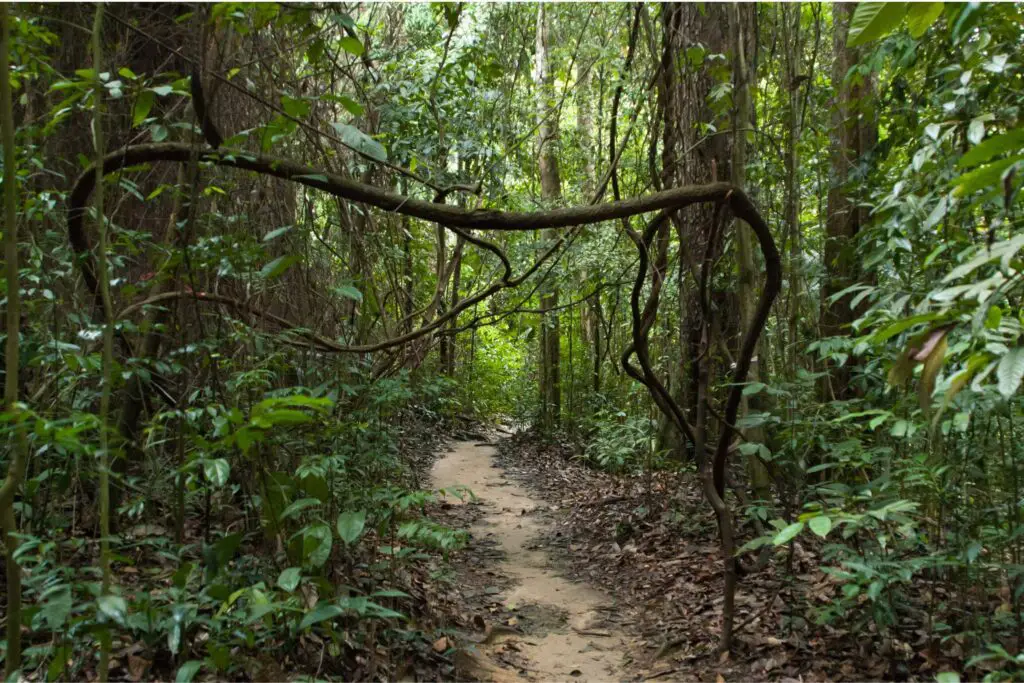
When you arrive at Bukit Timah, take some time to look around the Visitor Centre at the entrance first. Small but interesting displays showcase the ecology and wildlife of the area, as well as relief maps on the walks. You may also have the opportunity to chat to one of the friendly and helpful reserve guides.
Walking & Biking Trails
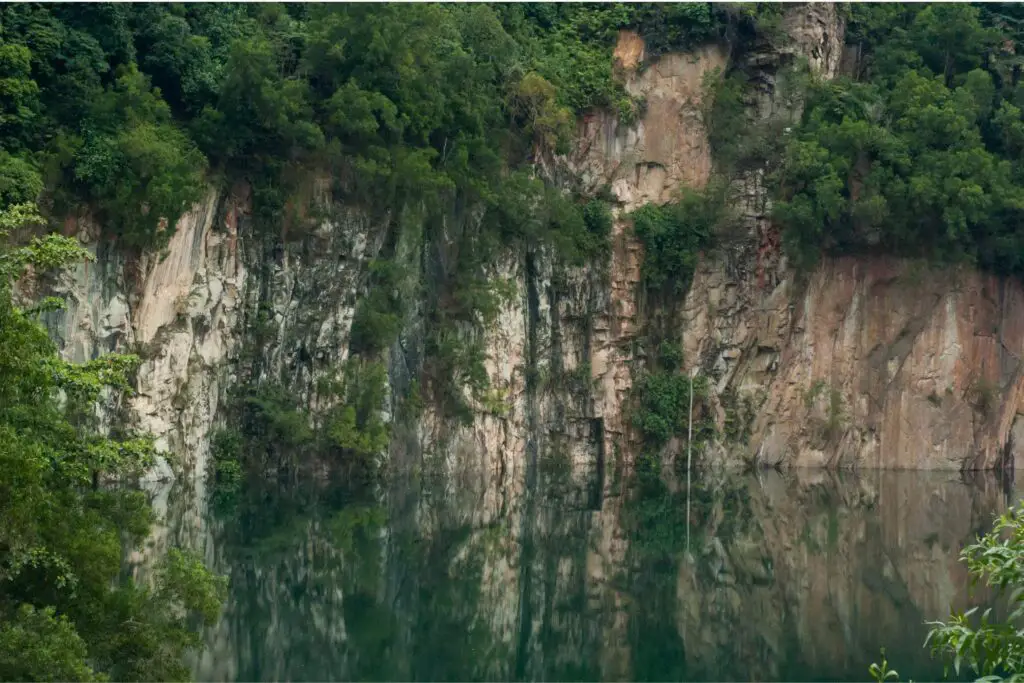
A number of waymarked footpaths lead off from the Visitor Centre. Most visitors start with the 1.3km path to the summit, an easy 30-45 minute (although occasionally steep) climb, with many shelters to catch your breath along the way. The summit itself has been cleared, but don’t expect much in the way of a view other than an endless expanse of forest!
From the summit path you can take one of the colour coded jungle walking trails that lead you deeper into the forest which will give you more chances to spot wildlife. A longer path takes you to the Dairy Farm Nature Park which includes a wetland area with abundant bird life.
In the reserve there are three quarries once used to mine granite, now flooded with water, providing an oasis for wildlife. Stay still for a few moments and you may see Kingfishers or Tiger Shrikes.
For those that prefer two wheels and a little more adrenaline, there are a number of mountain biking trails across the reserve to explore instead.
The Wildlife at Bukit Timah Nature Reserve
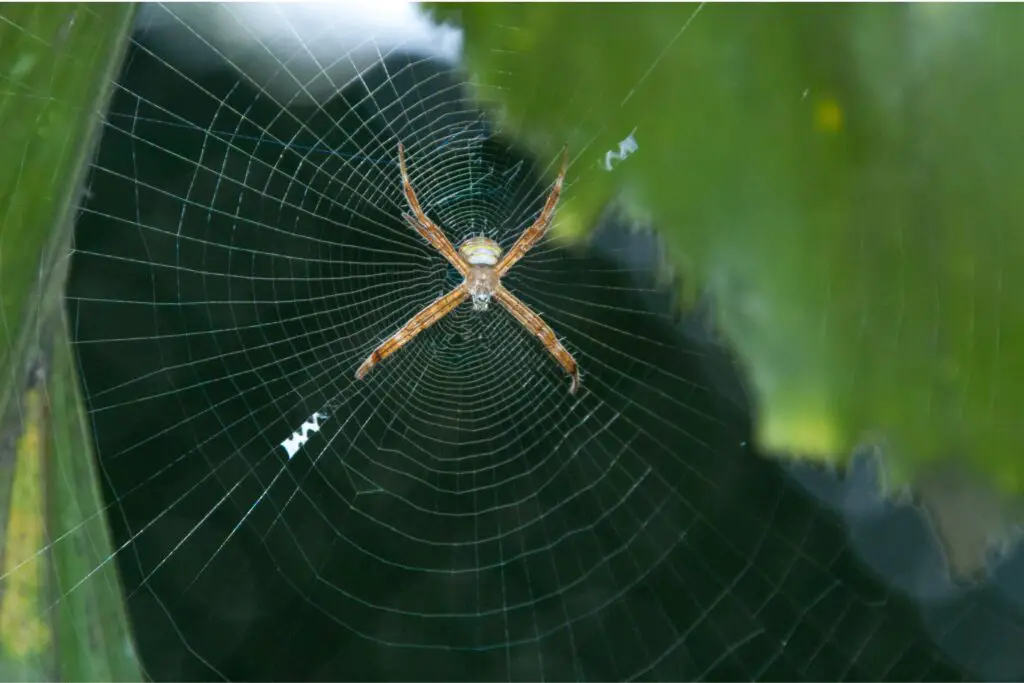
Due to Singapore’s position on the equator, the reserve boasts one of the richest and most diverse ecosystems. The Bukit Timah Reserve is incredibly home to more than 800 types of plant and 500 species of animals.
Despite this richness, forest animals are typically shy and elusive, so to spot them it’s important to remain quiet as you walk around the reserve.
Birdlife
As you walk, take time to listen to the sounds of the forest around you. Not just the breeze in the trees and the cracking of twigs and dry leaves, but also the birdsong. The birds here are more likely to be heard than seen – there are many species in the forest of Bukit Timah, including colourful parakeets, drongos and mynas.
Certain drongo species are skilled imitators and possess a range of alarm calls that frequently elicit responses from other birds and animals. These birds are also recognised for emitting false alarm calls to frighten other creatures away from food, allowing the drongo to take it for themselves.
Long-tailed Macaques
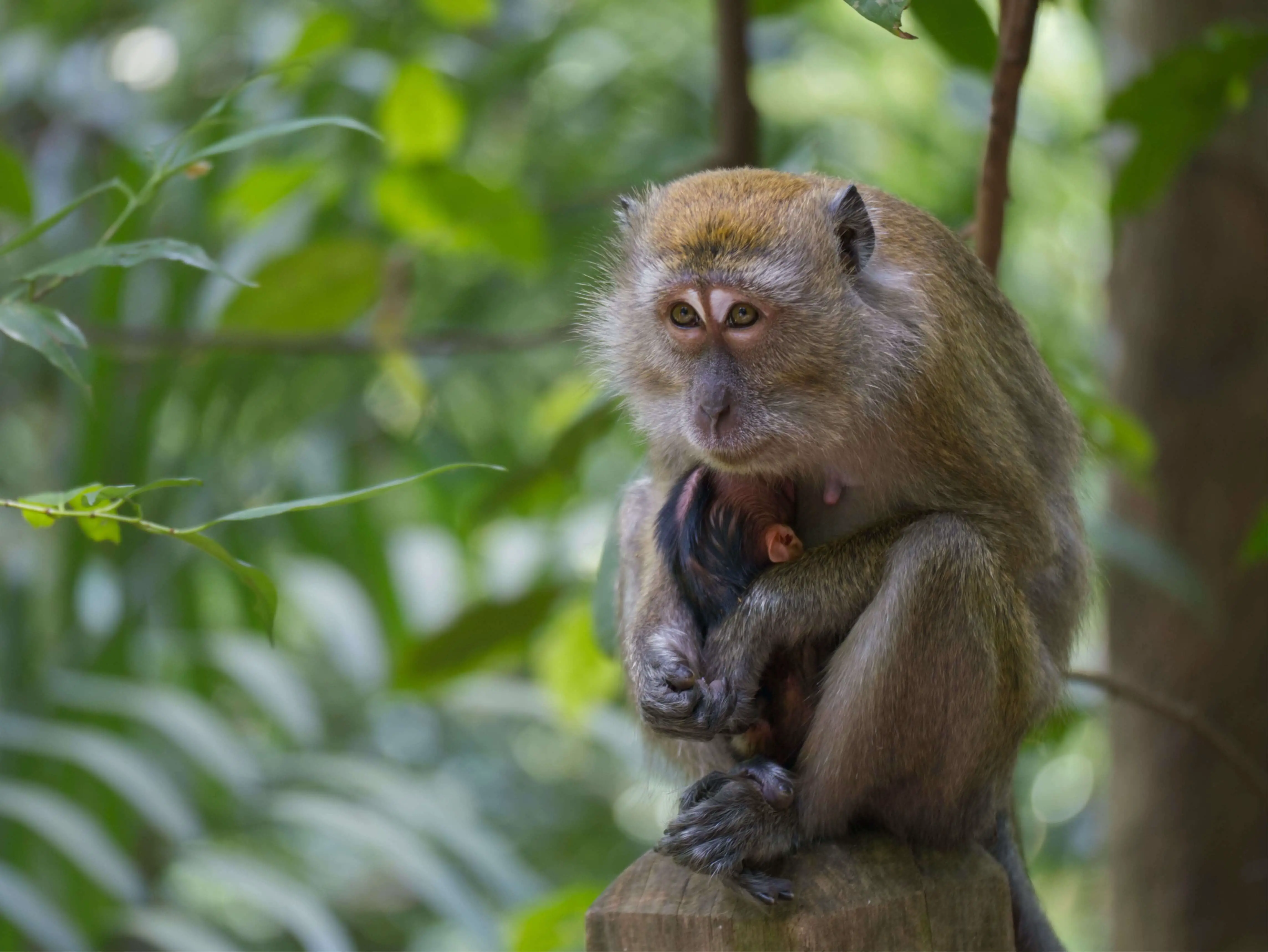
You’re also likely to hear the chattering of monkeys echoing through the forest. Long-tailed macaques (otherwise known as ‘crab-eating macaques’) are common in the reserve, and you’ll likely see them rooting through the foliage for food.
The monkeys get their name because their tail is often longer than their body. Their other name refers to them often being seen foraging on beaches or swamps for crabs, as they are opportunistic omnivores.
Typically they reside in social groups of up to eight individuals dominated by females as the males leave the group once they reach puberty. So once you spot one, you’ll likely see the whole group emerging from the forest.
Squirrels & Flying Lemurs
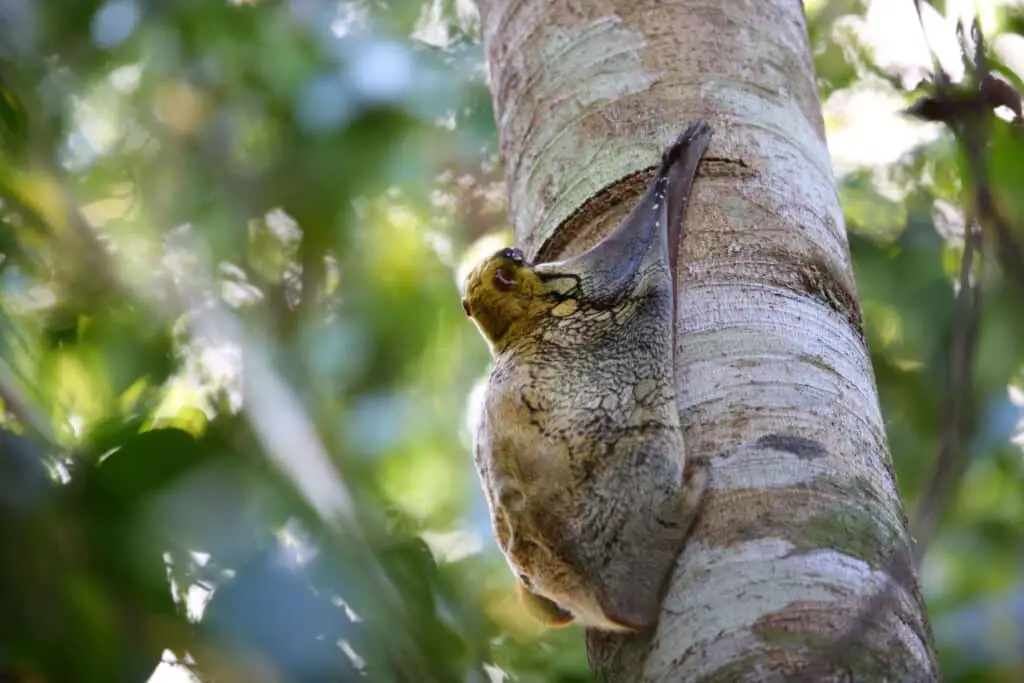
The plantain or slender species of squirrel can often be seen climbing trees or rustling on the forest floor, most commonly in the morning or early evening.
Flying lemurs also reside in the reserve, but don’t confuse them with squirrels. Flying lemurs are arboreal climbers and glide using ‘wings’ which are broad folds of skin between their long limbs and tail, a bit like bats. They also have webbed feet with claws.
If you’re extremely lucky, you may see the red-cheeked flying squirrel, as Bukit Timah is the only place in Singapore where it can be found.
Malayan Pangolin
Although you’re unlikely to spot them because they’re shy and solitary nocturnal creatures, the Malayan Pangolin (also known as the scaly anteater) can be found in the Bukit Timah Nature Reserve.
They’re a critically endangered mammal covered in scales that are made of compressed hair. When threatened, a pangolin curls up into an armoured ball and may also use its anal gland to produce a foul smell to deter any predators.
Snakes & Reptiles
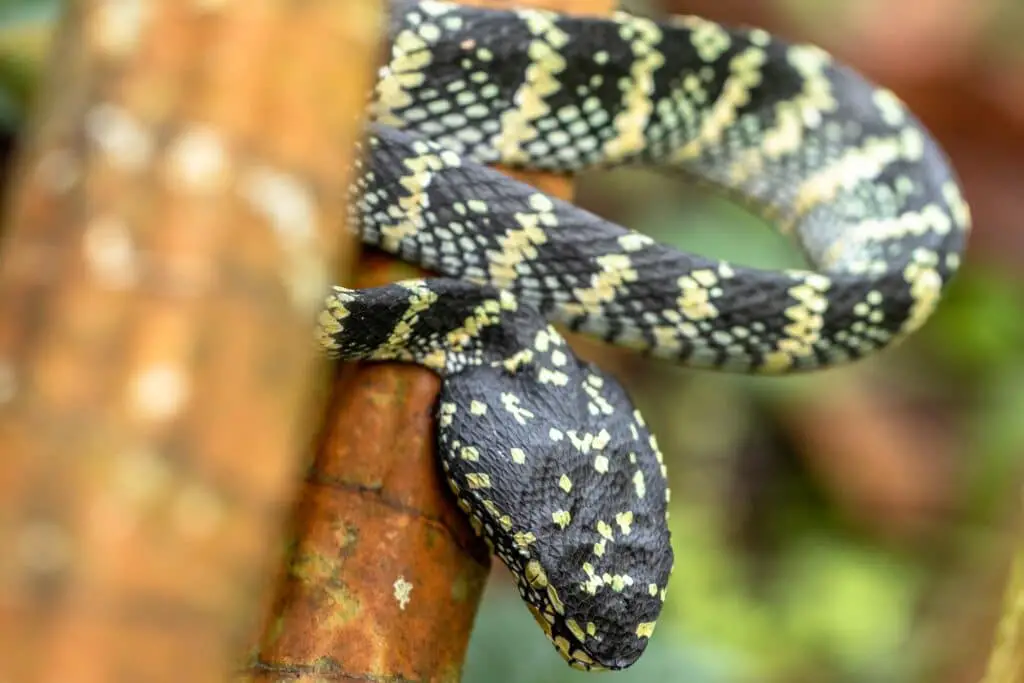
There are many types of snake in Bukit Timah Nature Reserve, some of which are poisonous. Most of these are elusive so you need not worry, but if you do spot one, be sure not to get too close!
Common reptiles in the reserve include the reticulated python, the paradise tree snake and the common sun skink.
The Flora of Bukit Timah
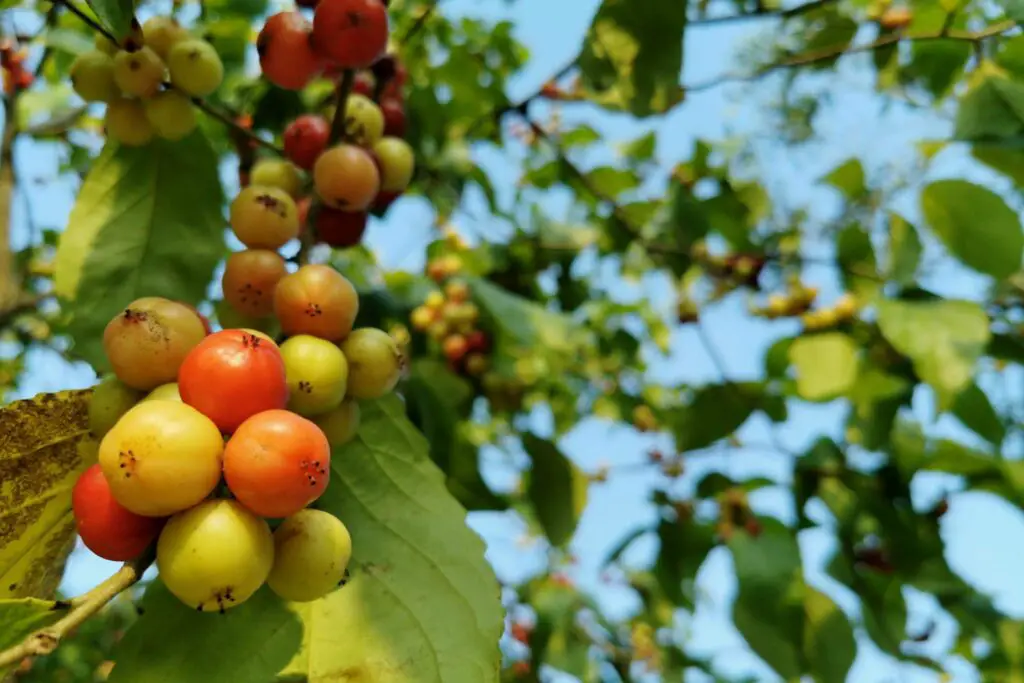
According to the Singapore tourism board, a hectare-plot of land in Bukit Timah Nature Reserve contains on average more tree species than the whole of North America, highlighting its rich biodiversity, which is all protected by the 2005 Parks & Trees Act 2005.
Attempts are made to preserve the reserve’s natural state, for instance, a fallen tree is likely to be left to rot and to provide a habitat for plants and insects.
Singapore’s tallest trees, reaching over 40 metres at Bukit Timah Reserve, are from the Dipterocarp family. Among these, a Seraya is estimated to be around 360 years old – one of Singapore’s oldest trees.
Because the trees form a dense canopy, there are few flowers in the rainforest, although there are orchids if you look hard enough.
However amongst the trees, there is a vast tangle of climbing palms (rattans), vines and ferns. In fact, there are over 80 different species of ferns growing here alone. Ground-growing gingers and figs, noticeable by their small spherical green fruits growing on its trunks, are abundant, as well as colourful batoko plums (lovi-lovi).
If you tread quietly and walk with eyes wide open, you’ll see an astonishing variety of plant and animal life in the Bukit Timah Nature Reserve.
What You Need to Know About Visiting Bukit Timah Nature Reserve
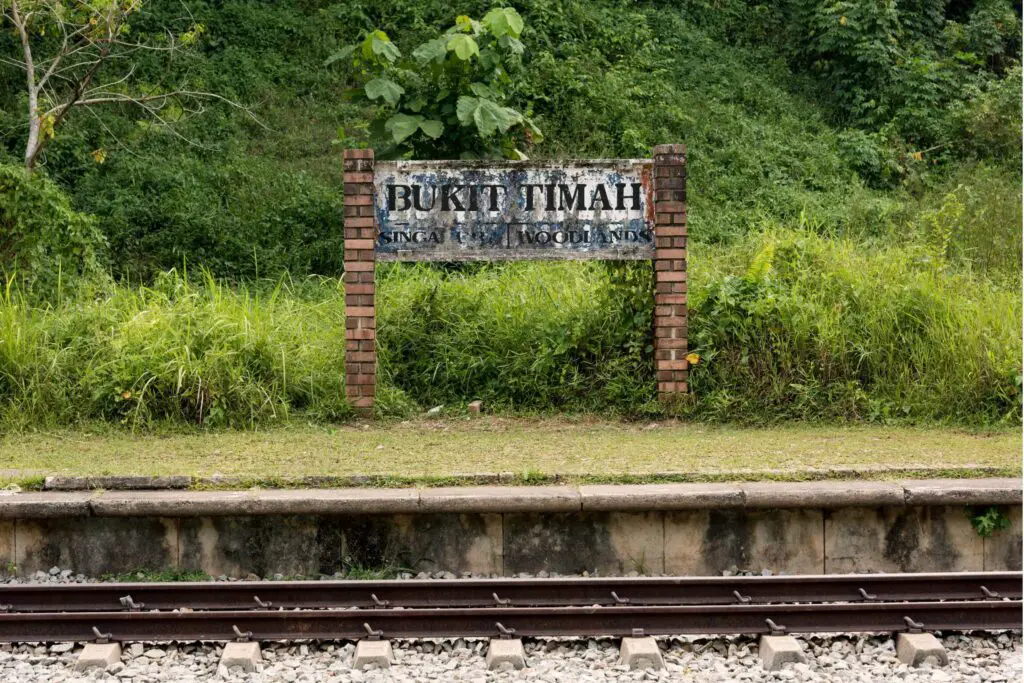
Bukit Timah Nature Reserve is open from 7am to 7pm, and there is no admission charge, making it a fantastic free activity to do in Singapore.
It’s best to visit in the early morning or late afternoon when it is not so hot, there are fewer visitors, and there is more chance of spotting wildlife.
Sturdy shoes are recommended if you’re going to follow the jungle trails. You need to be aware that these paths can be challenging to walk: steep and uneven in places with protruding tree roots and muddy patches in places (the rain in the tropics can be torrential). The reserve is wheelchair accessible as far as the Visitor Centre.
Make sure to take plenty of water (you can fill up at the visitor centre) and a good insect repellent.
If you take your own food, you are asked to ensure that you do not leave anything behind and to not feed the monkeys. Better still, look forward to a meal in one of the many small restaurants on the road behind the bus stop where you may have arrived.
Final Thoughts
Bukit Timah Nature Reserve is a verdant wildlife sanctuary amidst the urban landscape of Singapore, offering a tranquil escape into the tropical biodiversity of the region.
With its easy accessibility, diverse flora and fauna, and the opportunity to witness the splendour of a primary rainforest, a half day trip to Bukit Timah Nature Reserve is a must-do for any outdoor or wildlife-loving explorer.
If you like the sound of the Bukit Temah Reserve, then you may also be interested in a day trip to Pulau Ubin, a history and nature-rich island just 15 minutes off Singapore’s northeastern coast. Pulau Ubin is a safe place to visit solo, or with the whole family, and a popular thing to do is to hire a bike to explore it on two wheels.

Author: Karen Warren
Karen Warren is a freelance writer, book reviewer and novelist. She writes about travel on her website WorldWideWriter.



